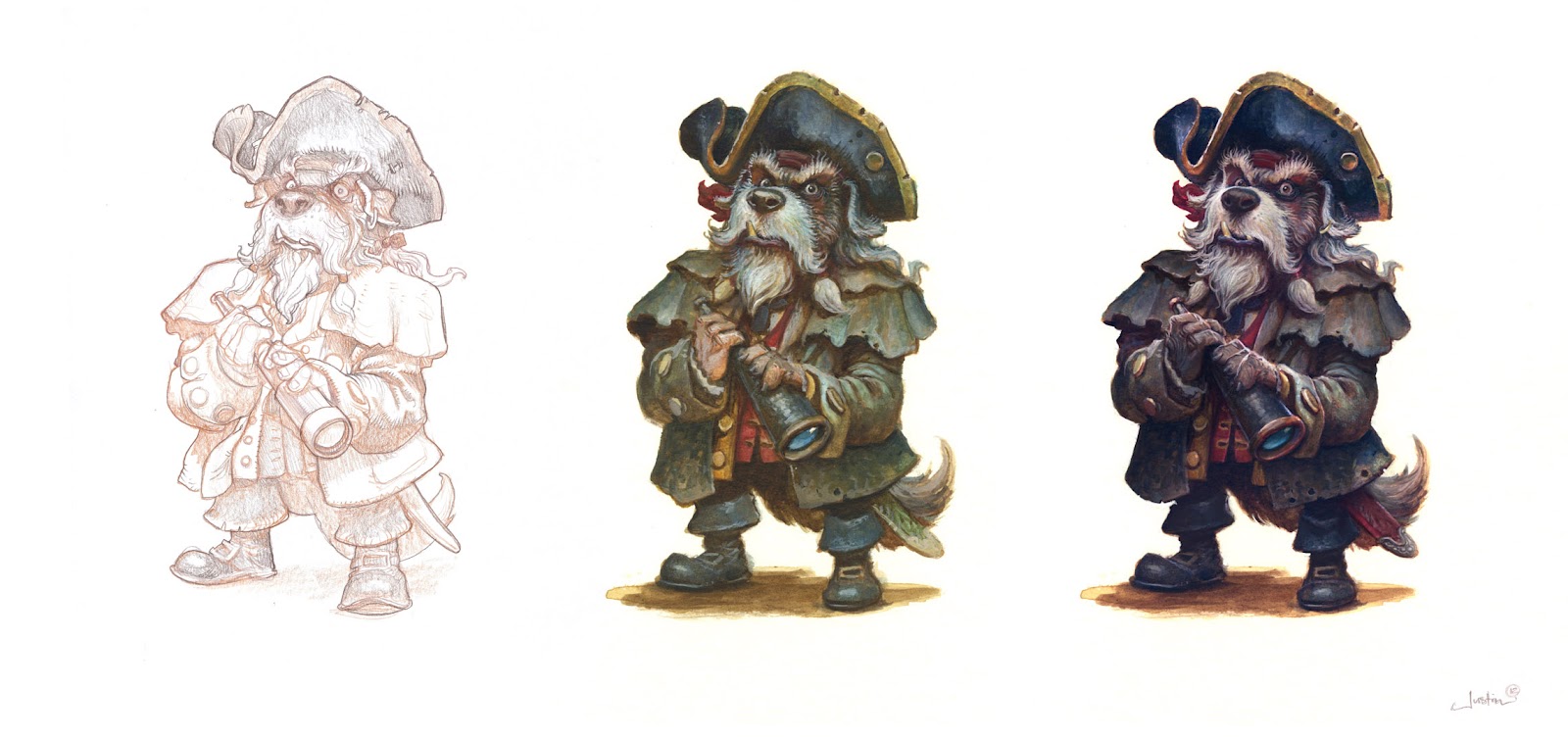 |
| Pencil Drawing, Watercolor, and then Watercolor and Digital |
This was a brief experiment in working more opaquely than I usually do. (Both in the watercolor and in the digital.)
The digital work is very minimal. In CS5 it is just one Color Balance layer and a few normal layers.
Usually I will use hundreds, nay thousands, of multiply and screen layers to finish even a simple character when I am working over a much lighter watercolor.
As for the brushes themselves, they were mostly Photoshop standards and a few pencil brushes of my own. Nothing fancy since the traditional watercolor does most of the texture work.
I didn’t do very well getting bright colors in the original watercolor. But if I ever need to paint something so that it looks like a complete mess, then I am pretty confident that I will knock it out of the park.


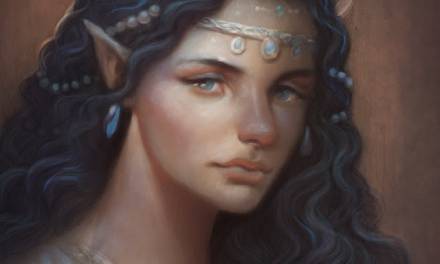
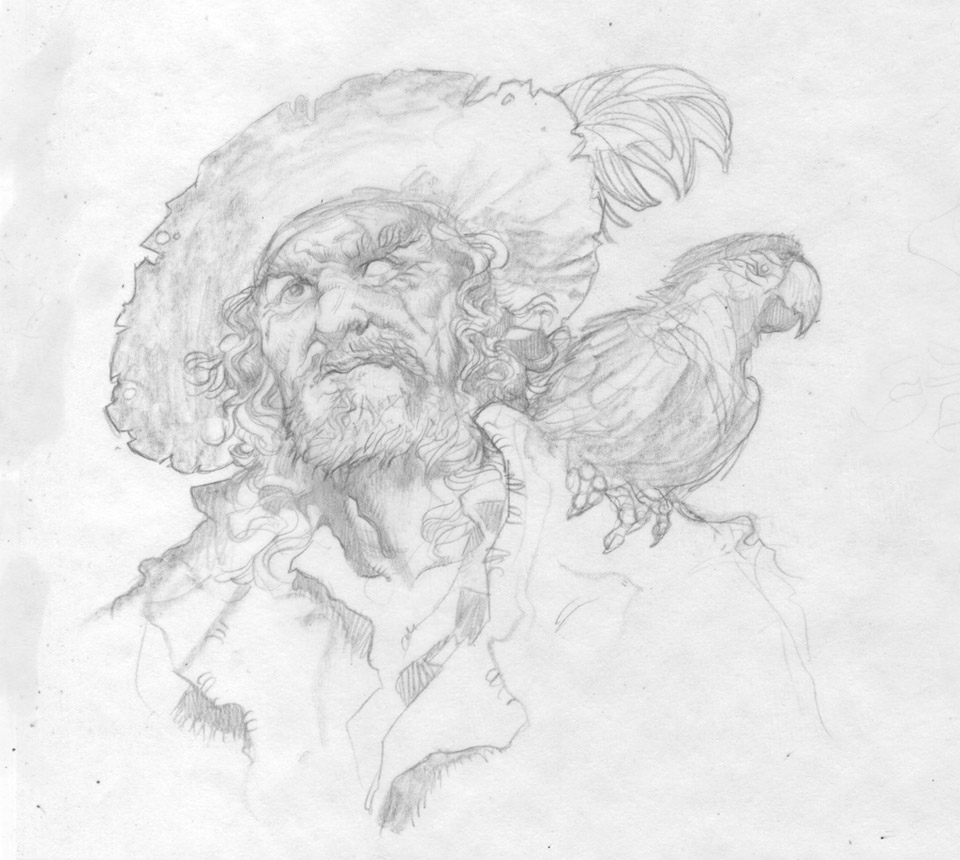
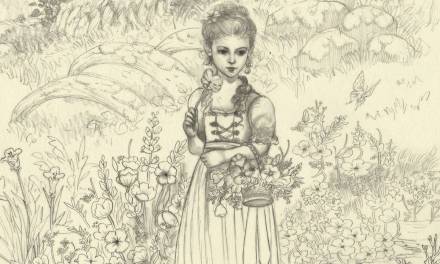
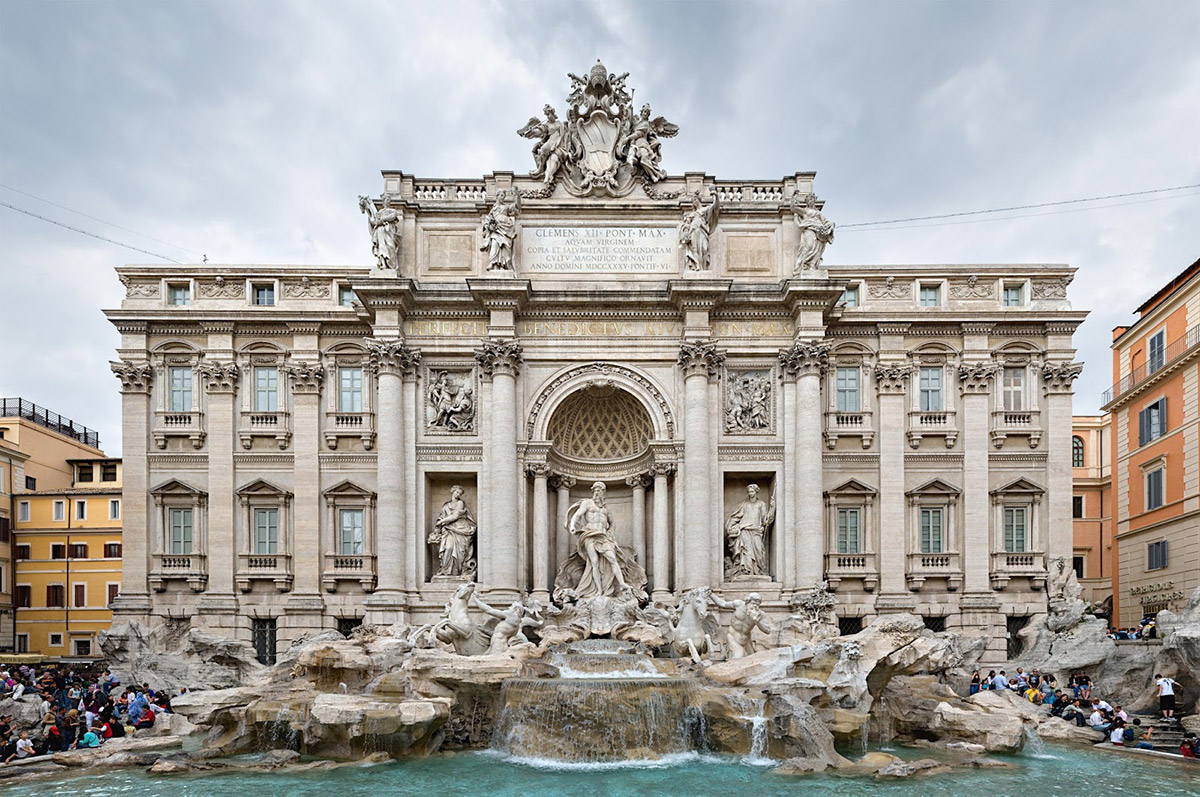

Cool. It's encouraging to know that I'm not the only person addicted to layers.
Justin, can you do a blog post on what to look for in a good watercolor kit?
Awesome little dog/pirate. I'm curious how big the watercolor and subsequent digital piece is/are. It's always hard to guess at original scale when vieweing online. Thanks!
Hey Justin!
I'm curious as to how you manage your colors when you're watercoloring. In my previous experience with watercolors, I end up just getting a lot of muddy blended mess and the colors don't stay vibrant. What do you do to get the blending that I'm seeing in Master Bones here, without the colors being “muddy”, ie. grey and gross. Don't know if that makes sense or not, but it's something that puzzles me. Maybe I just need to watercolor more (I'm currently finishing up an oil painting I started at IMC).
Thanks for sharing your process with us, it's always a lot of fun. Have you ever thought of doing a video demo of one of these watercolor/digital pieces for MC? That would be great if you could find the time!
Later,
Will
I love your little characters Justin. They're so much fun. I was wondering if you've ever tried glazing color over a grisaille underpainting? Since you seem to enjoy experimenting with mediums quite a bit, I thought you might want to play around with this method. It works great with oil paints. I've had pretty good results making a full tonal underpainting using raw umber and white, (Italian method – Caravaggio) or a mixture of raw umber and ivory black plus white (French method – Ingres). Then using liquin, I just add thin glazes of color (much like watercolor). The key is to keep the glazes thin and transparent, and build up, rather than trying to get too opaque too soon. Here's a demonstration:
http://underpaintings.blogspot.com/2012/01/adrian-gottliebs-verdaccio-technique.html
The nice thing about using oil is that if you don't like the color glaze, you can wipe it right off and still have your grisaille. I've ruined a few underpaintings trying to use acrylic because it dries too quickly.
Lovely.
Ha, well unfortunately, my kit still changes from project to project. I haven't quite arrived at any one setup that I prefer over others quite yet.
But it's a great idea for a post. I will definitely keep it in mind.
Ah! I totally forgot to post the size. It is really small, only about 5 x 7 inches.
Well, I don't really have a very good setup at the moment to do video myself. But I am actually working on a demo series with some developers at the moment. I can't really say when it will be out or anything yet, just that I am working on something, and it should be out in the near future.
As for how to keep it from going grey, I dunno. This one actually turned out much more gray than I had intended. But what I hear from the guys who are able to do it is “just keep adding more of the color to the area you want to saturate until it hits the right color.” (I know, I know, it sounds so simple when you say it like that, but it never seems to work out that way when you are doing it…)
Hey elreyes,
Actually any time I oil paint that is EXACTLY how I work. (Great article by the way! Thanks for sharing. Innis does a great job with that blog. It is all super well-researched.) I still have some of the same old hangups with solvents though, and that keeps me from doing it more.
Still, I love this method. Even for other mediums, which may sound weird. It has actually heavily informed the way that I work in watercolor and in digital.
Awesome! I'll be looking for those…
And that sounds like a pretty good strategy. I mean, logic would have it that the more pigments you dump onto any given area should boost the saturation. I guess the trick is not to spread the paint so thin that it just overlaps & gets greyed out. Well, I'll definitely give it a shot.
-Will
Justin, The more I think of it, that really is the best method for you. Just use Liquin. No part of that process should require ANY amount of turp, provided you keep the underpainting really lean… or better yet acrylic.